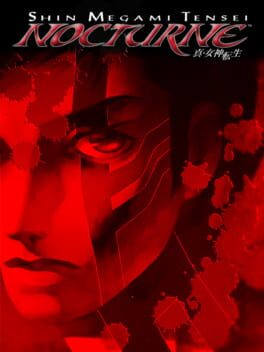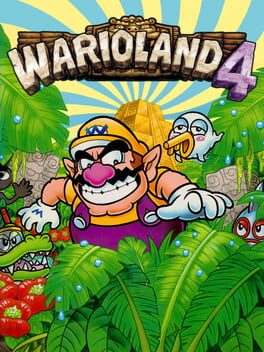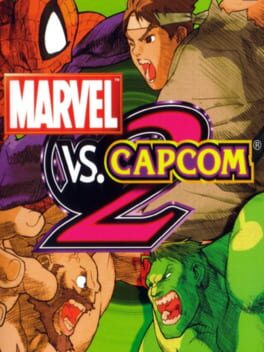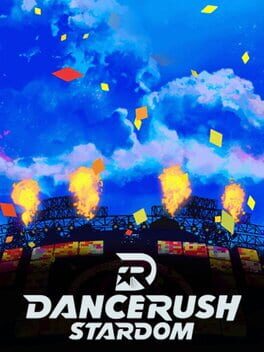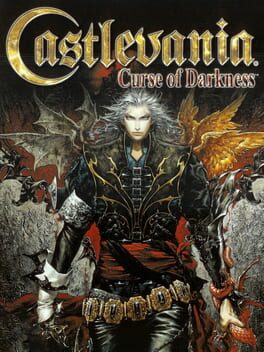hzdonut
Bio
I like to start video games and never finish them
I like to start video games and never finish them
Badges

Best Friends
Become mutual friends with at least 3 others

Noticed
Gained 3+ followers

2 Years of Service
Being part of the Backloggd community for 2 years

Liked
Gained 10+ total review likes
Favorite Games
055
Total Games Played
000
Played in 2024
000
Games Backloggd
Recently Reviewed See More
Curse of Darkness is a game that tries a little bit of everything. A hack-and-slash metroidvania with rpg and pet raising elements. Individually, none of these mechanics really blew me out of the water but altogether they made for a solid and unique experience that works much better than it has any right to.
Combat is definitely not the most technical, especially by 2005. You have one button for your main attack and one for your finisher, which varies depending on which weapon you have equipped and where in your combo it’s pressed. Besides that, all the staples of your typical hack and slash: dodging, blocking, and parrying. Your enjoyment of the combat is going to vary depending on how much you’re willing to tolerate PS2 action games. It can feel somewhat repetitive with the lack of enemy variety but there’s enough fun to be had with the different weapon types. What really sets Curse of Darkness’s combat apart from your typical action game is through the addition of summons, called innocent devils. Throughout the game, you unlock several of them which can assist combat and unlocking new areas. Innocent devils level up and evolve depending on your weapon type, unlocking different abilities depending on the path they branch out to. Evolving these guys was a lot of fun and helped to shake up what otherwise would be extremely vanilla combat. Along with innocent devils, the crafting mechanic helped keep me invested in the game. As you acquire new materials, you can craft them with previous weapons and armor to unlock new ones. Instead of having to search out recipes, they’re automatically unlocked when you have the right materials for crafting. This mechanic was surprisingly addictive; every time I would pick up a new material, it was always fun to open up the menu and see what I could make with it. Beyond just the stat increases, stronger weapons in the game would have new finishers, making unlocking new weapons exciting. Some materials are dropped from enemies after killing them, others are found in the wild, and others can be obtained through another one of the game’s unique mechanics- stealing. Each enemy has certain windows of time where they can be stolen from by pressing the finishing button at the right time. It varies from enemy to enemy but typically happens after attacks. Even bosses can be stolen from for oftentimes unique and missable items. This this definitely helps to incentivize more aggressive tactics. The window of time for stealing can sometimes be pretty short, and if you’re keeping your distance you’ll miss the chance to steal from some enemies. I’m sure if the game was much longer, these mechanics would lose their novelty but for the game’s length it’s more than enough.
As far as the exploration goes, it’s fine. Compared to the series’ 2D counterparts or other series (the first 2 Metroid Primes were out at this point) the world can feel somewhat barren. However, each area still has little secrets scattered about. Discovering these secrets and filling in the map still gave me the same serotonin rush that more nuanced exploration-based games provided. None of the areas really blew me away but they all do still fit with the tone of the game. My biggest qualm is just how big these areas can feel with the speed that Hector moves around at. Backtracking through areas can sometimes feel like a total slog, especially when most areas feel like they’re just designed as big open combat arena spaces. Even with the ample teleportation rooms, I found myself dreading having to go back and forth through certain areas. Despite this, I still have to give the team props for ambition. They could have easily just made Curse of Darkness just a linear arena-based action game but they went out of their way to craft complex maps in a hack-and-slash, which I really haven’t seen done before or after.
Although Castlevania games are never really known for their stories, Curse of Darkness’s story really felt like a whole lot of nothing. You’re not really given much context to the conflict, other than that the protagonist, Hector is seeking revenge on some slutty red-haired emo guy. I’ve been told the manga provides more backstory but the game should really provide some sort of reason to care without having to seek out external media. Despite this, I did get a good amount of enjoyment from the cutscenes. They can be pretty cheesy but in a charming way that you’ll only find from this era of gaming. The story is definitely not the reason I played this game to completion but it’s there.
With all my enjoyment of this game, it is a tough one to recommend without several asterisks. Is it an essential game for any action game fan? Definitely not. Is it the best game in the franchise? Not even close. However, I really can’t help but admire the ambition behind it. Despite some pretty glaring flaws, I really did enjoy my time playing Curse of Darkness. While it’s not winning any awards for its combat or exploration, it’s a game that’s more than the sum of its parts and makes for a unique short and sweet experience. I wouldn’t call Curse of Darkness a masterpiece but I can confidently call it a gem of the PS2 and Castlevania series as a whole.
Combat is definitely not the most technical, especially by 2005. You have one button for your main attack and one for your finisher, which varies depending on which weapon you have equipped and where in your combo it’s pressed. Besides that, all the staples of your typical hack and slash: dodging, blocking, and parrying. Your enjoyment of the combat is going to vary depending on how much you’re willing to tolerate PS2 action games. It can feel somewhat repetitive with the lack of enemy variety but there’s enough fun to be had with the different weapon types. What really sets Curse of Darkness’s combat apart from your typical action game is through the addition of summons, called innocent devils. Throughout the game, you unlock several of them which can assist combat and unlocking new areas. Innocent devils level up and evolve depending on your weapon type, unlocking different abilities depending on the path they branch out to. Evolving these guys was a lot of fun and helped to shake up what otherwise would be extremely vanilla combat. Along with innocent devils, the crafting mechanic helped keep me invested in the game. As you acquire new materials, you can craft them with previous weapons and armor to unlock new ones. Instead of having to search out recipes, they’re automatically unlocked when you have the right materials for crafting. This mechanic was surprisingly addictive; every time I would pick up a new material, it was always fun to open up the menu and see what I could make with it. Beyond just the stat increases, stronger weapons in the game would have new finishers, making unlocking new weapons exciting. Some materials are dropped from enemies after killing them, others are found in the wild, and others can be obtained through another one of the game’s unique mechanics- stealing. Each enemy has certain windows of time where they can be stolen from by pressing the finishing button at the right time. It varies from enemy to enemy but typically happens after attacks. Even bosses can be stolen from for oftentimes unique and missable items. This this definitely helps to incentivize more aggressive tactics. The window of time for stealing can sometimes be pretty short, and if you’re keeping your distance you’ll miss the chance to steal from some enemies. I’m sure if the game was much longer, these mechanics would lose their novelty but for the game’s length it’s more than enough.
As far as the exploration goes, it’s fine. Compared to the series’ 2D counterparts or other series (the first 2 Metroid Primes were out at this point) the world can feel somewhat barren. However, each area still has little secrets scattered about. Discovering these secrets and filling in the map still gave me the same serotonin rush that more nuanced exploration-based games provided. None of the areas really blew me away but they all do still fit with the tone of the game. My biggest qualm is just how big these areas can feel with the speed that Hector moves around at. Backtracking through areas can sometimes feel like a total slog, especially when most areas feel like they’re just designed as big open combat arena spaces. Even with the ample teleportation rooms, I found myself dreading having to go back and forth through certain areas. Despite this, I still have to give the team props for ambition. They could have easily just made Curse of Darkness just a linear arena-based action game but they went out of their way to craft complex maps in a hack-and-slash, which I really haven’t seen done before or after.
Although Castlevania games are never really known for their stories, Curse of Darkness’s story really felt like a whole lot of nothing. You’re not really given much context to the conflict, other than that the protagonist, Hector is seeking revenge on some slutty red-haired emo guy. I’ve been told the manga provides more backstory but the game should really provide some sort of reason to care without having to seek out external media. Despite this, I did get a good amount of enjoyment from the cutscenes. They can be pretty cheesy but in a charming way that you’ll only find from this era of gaming. The story is definitely not the reason I played this game to completion but it’s there.
With all my enjoyment of this game, it is a tough one to recommend without several asterisks. Is it an essential game for any action game fan? Definitely not. Is it the best game in the franchise? Not even close. However, I really can’t help but admire the ambition behind it. Despite some pretty glaring flaws, I really did enjoy my time playing Curse of Darkness. While it’s not winning any awards for its combat or exploration, it’s a game that’s more than the sum of its parts and makes for a unique short and sweet experience. I wouldn’t call Curse of Darkness a masterpiece but I can confidently call it a gem of the PS2 and Castlevania series as a whole.

